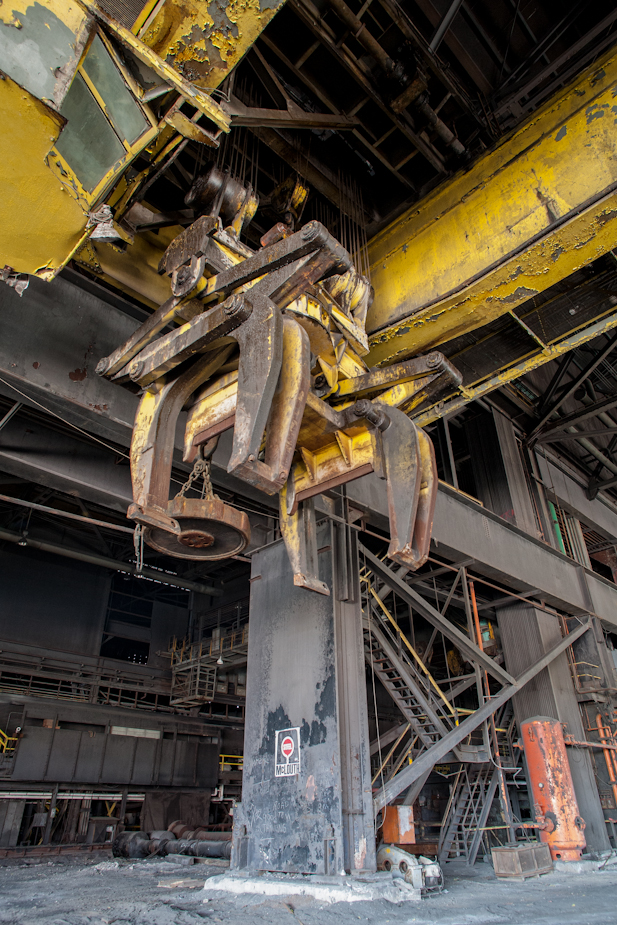Hartsville Nuclear Power Plant, Tennessee
This power plant has been sitting abandoned, being reclaimed by nature, since 1983 when the Tennessee Valley Authority cancelled construction on this plant.
Print - http://smu.gs/1c0hijb

Hartsville Nuclear Power Plant, Tennessee
This power plant has been sitting abandoned, being reclaimed by nature, since 1983 when the Tennessee Valley Authority cancelled construction on this plant.
Print - http://smu.gs/1c0hijb
You know that feeling when everything else in life fades away, you can't stop smiling, you feel like you're floating and you never want that moment to end...that's how I feel exploring and photographing architecture and history and the forgotten past.
I vividly remember this day, back in 2009, inside Building 231 at the former Hunter's Point Naval Shipyard in San Francisco. It had just rained and the whole lower level was covered in a few inches of water and the reflections were extraordinary.
I think it's about time to get out and do some exploring again soon...
Unfortunately, today's image comes with a sad story of a history lost. The Saint Nicholas coal breaker, just outside of Manahoy City, Pennsylvania, is undergoing demolition as I write this post.
The plant opened in 1932, but to begin construction in 1930, half of the village of Suffolk had to be relocated to make room for the massive facility. The construction process included laying 20 miles of railroad track, 1.5 miles of conveyor and 118 miles of wire and cable.
The Saint Nicholas breakers were the largest coal facilities in the world and at the time this was the second largest plant in the world. The factory was constructed with 2 separate sides that are able to operate independently and produced a combined volume of 12,500 tons of coal per day.
This plant closed since 1963.
Cooling Tower, Hartsville Nuclear Power Plant
The concept of a cooling tower is to reject heat by cooling water in an evaporative manner. The heat from the water transferred to the air raises the temperature of the air and increases the humidity and that air is released into the atmosphere.
Cooling towers are very effective at the disposal of heat, more so than dry devices, as water can cool much faster than other methods. This natural draft cooling tower relied on the buoyancy of the heated air to provide the draft up the tower and was incredibly efficient as it cooled water by the thousands of gallons.
Looking up one of the cooling towers at the unfinished Hartsville Nuclear Power Plant in Tennessee.
Hartsville Nuclear Plant
The Tennessee Valley Authority never imagined that construction on this plant would end a few short years after it began, in 1983, with thousands of government dollars wasted, creating a paradise for people like me.
Walking around this plant, I felt small. Being surrounded by a massive world of nuclear concrete that is slowly being overtaken by nature, after being abandoned for three decades, is an experience you can't easily forget.
These places are my home. It's hard to convey how much life lies within the places most people consider to be dead. The walls of these buildings speak many words as long as you're willing to listen and embrace the history. I don't believe in ghosts, if they existed I definitely would have seen them in some of these places, but I believe in the countless stories and memories the patients and employees left behind.
Construction stopped on the Hartsville Nuclear Plant in Tennessee in 1983, part way into the building process. Once the Tennessee Valley Authority received reports depicting the actual need for nuclear power in the 80's, which was dramatically less than anticipated, the project was cancelled.
Fog at sunrise, Hartsville Nuclear Plant
Construction plans for the nuclear plant in Hartsville, Tennessee began in the 1970's, in preparation for the predicted need for nuclear power in the 1980's and beyond. When reports were presented depicting the actual demand for that type of power, the Tennessee Valley Authority realized the demand wasn't as high as predicted and cancelled the construction of the plant in 1983.
Vultures perch atop a partially constructed building at a nuclear power plant in Tennessee.

The Safe Cabinet Company began in Ohio in 1905. The company manufactured safes and was in operation for 20 years before merging with The Rand Company, to form Remington Rand in 1927.
The Safe Cabinet Company headquarters in Marietta, Ohio was comprised of a a series of large multi story warehouses and a beautiful administration building constructed with large columns at the front entrance. The front half of the building contained multiple stories of offices, while the rear boasted a theatre, spanning from the basement to the second floor of the complex.

The Mare Island Naval Shipyard closed in the 1990's as part of the Base Realignment and Closure Program, but most of the cranes, dry docks and buildings still remain.

Blue hour on the San Francisco Bay.
(30 second exposure @ f/8, ISO 200.)

At its peak, McLouth Steel in Trenton, Michigan only produced 1-2% of the domestic steel market, but the plant was responsible for a few innovations, which made it more well known.
In 1962, it was the first plant to use computer controls and it was the first American steel plant to finish a product using continuous casting.
The plant was purchased in 1996 by the Detroit Steel Company, but after a few unsuccessful startups, the plant became nonoperational.
(From the archives, 2009.)

The blast furnaces at the U.S. Steel, also known as Homestead Steel Works, in Pennsylvania are all that remain of the former plant. Though the site remained in operation until 1986, the furnaces have been inactive since 1978.

The Carrie Furnaces are all that remains of the former Homestead Steel Works on the Monongahela River in Pennsylvania.